I think Barcelona happens to be one of those cities that slightly edges out it’s country’s capital as the better city (no offence to Madrid, I still think it’s fantastic). I’ve been twice and on both occasions discovered different aspects of the city. Having said that, I still feel that I have barely scratched the surface on what this city has to offer, so I must plan to return a third time.
So why is Barcelona such a different and special part of Spain? For a start, you have to know that Barcelona is also the capital city of the Catalonian community in Spain. Catalonia consists of four provinces: Barcelona, Girona, Lleida, and Tarragona. Without going into historical specifics (you can read that here: Telegraph Article (highly summarised) or Wikipedia (of course) (highly detailed)), Catalan refers to its people, as well to its language (and this language is distinct from Spanish). I would hazard a pretty well educated guess that a large part of the unique vibrance and feel of Barcelona arise from this fact. Notwithstanding, to the common tourist, this distinction probably wouldn’t matter a single bit. What sets Barcelona apart, then? Well, here are my top experiences in good old “Barça” (pronounced “Barsa”, a shortened name of endearment I’m told).
Gaudí

The first thing that hits you when visiting Barcelona is Gaudi. Barcelona houses the most number of this renowned architect’s work, and it is clear he is one of the prides of the city. There’s even a metro station named after arguably one of the most fascinating cathedrals in the world – La Sagrada Familia. Its facade is under perpetual construction; and therefore often overlooked in favour of the interior. From the outside, it’s hard to be overly impressed with this most iconic building in Barcelona. It is always surrounded by cranes – giving off an incomplete and sometimes confused look. I’m sure the structure was envisioned by Gaudí to be as awe inspiring as the inside. Indeed, the grey and sandy exterior completely belies the overwhelmingly white interior, a blank canvass which takes on the myriad of colours as sunlight shines through the stained glass windows. How such architectural design is imagined of and later conceived as a workable structure escapes my comprehension. I could go on describing La Sagrada Familia to no end – but until you enter and stand in amazement amongst the tree-trunk like pillars, this has to be on your list of must-sees.
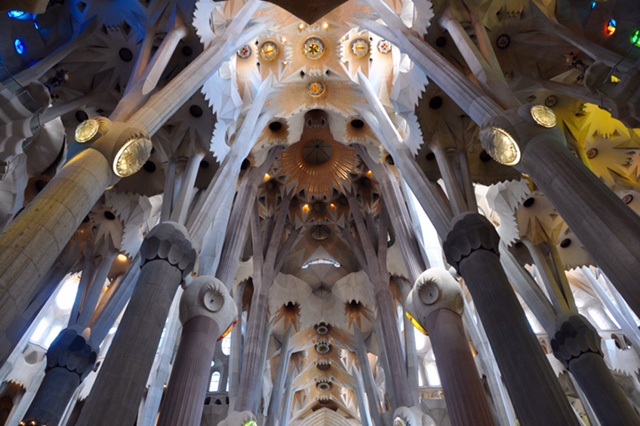

I go off-tangent here to write about Antoni Gaudí. I bought a book on his architecture during my second visit to Barcelona. It details the architectural creations of a man’s mind so unique and brilliant. Gaudí was born in 1852 and died at the age of 73 in 1926 – he was hit by a tram in Barcelona. At the time of his death, La Sagrada Familiar was still under construction and continues to this day. Gaudí was a Spanish Catalan architect and is best known as a practitioner of Catalan Modernism, a specific movement of art and literature of the Catalan culture. Gaudí’s work is highly idiosyncratic and very well celebrated. A number of Gaudí’s works have been declared World Heritage Sites by UNESCO. Most of these are located in Barcelona itself. I would recommend visiting the other attractions in the pictures below. You could easily spend a whole day on Gaudí.
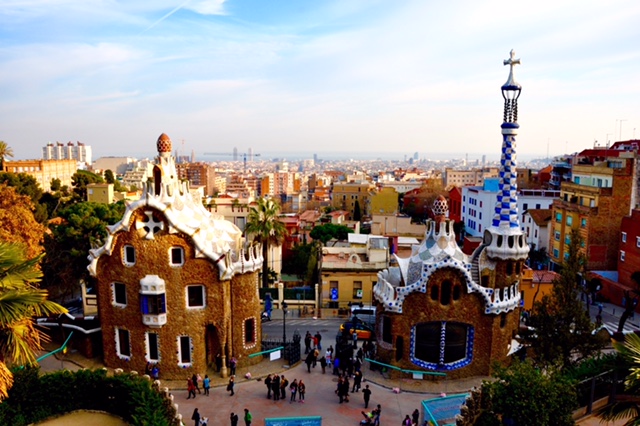
Eating and drinking
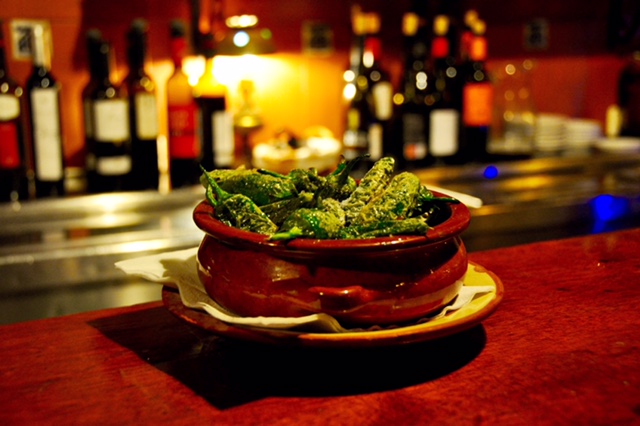
Perhaps one thing that needs no introduction is Spanish food, and there is no shortage of opportunity to tantalise your tastebuds in Barcelona. If Gaudí provided the intellectual stimulation, the eating and drinking experience here provided me with the tastiest of memories. I came to learn of a few types of quintessentially Spanish tapas on my first trip. One of them that has since turned into one of my favourite drinking snacks of all time (if I can find it) – Pimientos de Padrón – is just the humble green pepper flash fried in oil and coated lightly with cracked sea salt. When you pop one into your mouth, the initial hit of saltiness melts away to yield a sweet and fruity crunch, with a subtle bitter finish. They say that one in every five is spicy; I have yet to prove that theory true as they all seem pretty mild to me!
Wander into any little shop in Barri Gothic (I discuss this below) and you’ll find yourself in for a treat. Sometimes there may be a menu, sometimes not. Well, if you’re like me and don’t read/speak/write any Spanish, there’s not much point asking for the menu anyway. Instead, besides the peppers, order: ham of the black Iberian pig (Jamón Ibérico), palm-sized but thicker than usual omelettes with potato and onion (Tortilla Española), a Galician dish of boiled and sliced octopus on potatoes, drizzled with olive oil and sprinkled with paprika and flakes of salt (Pulpo á la Galena), and cheese made from sheep’s milk (Manchego). You can’t go wrong. And then, just for the sake of adventure, perhaps ask for the staff recommendation and you might be pleasantly surprised. I happened to be offered some rather interesting alcoholic beverages too, if you would like to venture beyond red wine (see pictures above). The Crema Catalana, very reminiscent of custard with alcohol, was really good and I ended up getting a bottle home with me at the airport. I haven’t seen it being sold anywhere else so do get one if you like this sort of thing – it didn’t cost any more than 30 Euros if I recall correctly. If I had to draw a rough comparisons, perhaps a little like Baileys? Oh, and then there was the Spanish red wine, which should be the only ones you should drink when in Spain – because why not?
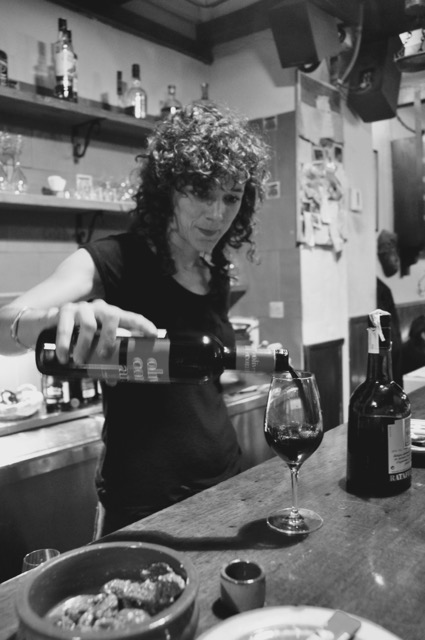
If your hunger has not subsided, or you’re simply itching to keep eating, you should make sure to visit the markets. I highly recommend Mercado de La Boqueria, just off La Rambla (again, see below). You’re greeted by mountains and mountains of fresh produce as you step into the market – enter with ravenous hunger and it could be a double-edged sword! If you like nuts, they are of exceptional quality here. The almond nougat (crunchy) is definitely a worthwhile souvenir and much better than the prepacked ones you can buy at the airport. Caramelised almonds and walnuts are superb too. Ham is in abundance. If you so desire, they will happily vacuum seal packs of melt-in-your-mouth thinly sliced but big flavoured jamon for a snack later on or to take home. On a hot day, the fruit ice Popsicles are a welcome delight – I went with the Sangria flavoured one for extra boozy kick, of course. Finally, and don’t miss this – to the left hand side of the entrance towards the edge of the market are a few tapas stalls. It’s no frills – sit at the bar counter and order whatever tickles your fancy. I suggest trying the grilled razor clams, grilled calamari and grilled white asparagus. The seafood tasted like they were just fished out of the Mediterranean. Don’t forget to order some ice cold beer, served in a caña.
Side note: A caña is a small glass of beer on tap and authentic Spanish culture. The glass is roughly 150ml so that it would still be cold by the time you finished it. I like the idea a lot.
Discover La Rambla and its side streets
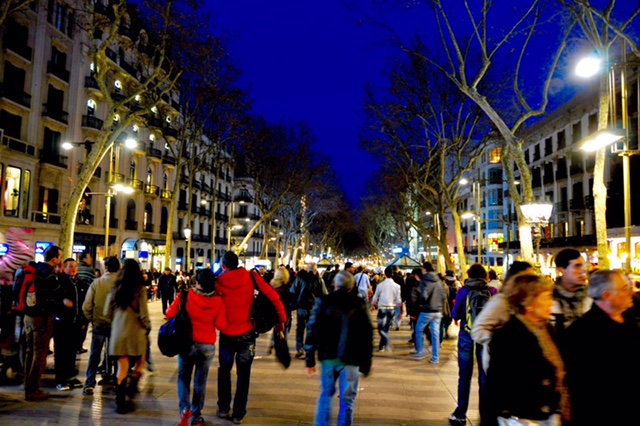
La Rambla is probably the most popular main street in Barcelona. It’s where all the tourists go. A good starting point is exiting at the Metro Catalunya stop and coming up at the Plaça de Catalunya. Here, locals sit around in the sun whilst tourists busy themselves with photo taking – this is very possibly the first exposure to the city for many holiday makers. At this point I share with you a little tale: I had begun busying myself with photos and therefore had spent a while peering through my camera’s lens. Finally satisfied with my pictures, I returned my attention to the “real world” and found an old lady stood next to me, hands outstretched asking for money. I promptly walked away and rejoined my group of friends, feeling slightly freaked out by the recent experience. So dear travelers, please exercise caution! The pickpockets along and around La Rambla are also notorious, preying on unsuspecting foreigners. When I walked around this area, we kept no wallets or money in our pockets. They were all stowed away in our backpacks, which were padlocked. Cameras were hung around our necks at all times, and females in our group carried no handbags.
Anyway, back to the fun stuff. If you looked around from the square, you’d see El Corte Inglés (a well known department store). I bought a few made in Spain leather belts here; there were so many to choose from. The quality is good – a black one I bought 3 years ago is still being worn everyday – and they are reasonably priced between 25 and 40 Euros. If you find a style that was too long for your size, they have a tailor on hand to shorten it for you on the spot too. Also around the area is Hard Rock Cafe if you collect their t-shirts. Personally, I always feel pretty cool putting on my Barcelona classic.
Wandering down La Rambla from Plaça de Catalunya for about 20 minutes will get you to a side street on the left called “Carrer de Colom”. Turn into it and keep walking for a minute to find yourself in Plaça Reial (see picture below). The square is another popular tourist spot with lots of restaurants and bars. This is a good place to spend a relaxing afternoon, sipping red wine, listening to live music and soaking in the atmosphere.

Barri Gòtic (“The Gothic Quarter”)
Barri Gòtic is the centre of Barcelona’s old town. You may start venturing into the old town by taking one of the streets off La Rambla (see, what did I say about La Rambla being popular?); the lanes before or after Plaça Reial are fine. It is said that many of the buildings here date back to the medieval times, some from as far back as the Roman settlement of Barcelona. The best way to see and discover Barri Gòtic is to just get lost in the maze of winding paths. There are a few touristic spots to be found here; amongst them being Cathedral of Santa Eulàlia, Basilica of La Mercè and Church of Santa Maria del Pi. See them if you absolutely have to – for me, I didn’t bother too much. The facade of those grey-brown buildings were the point of fascination for me. If I wanted to see a cathedral in Barcelona, La Sagrada Familia was IT.
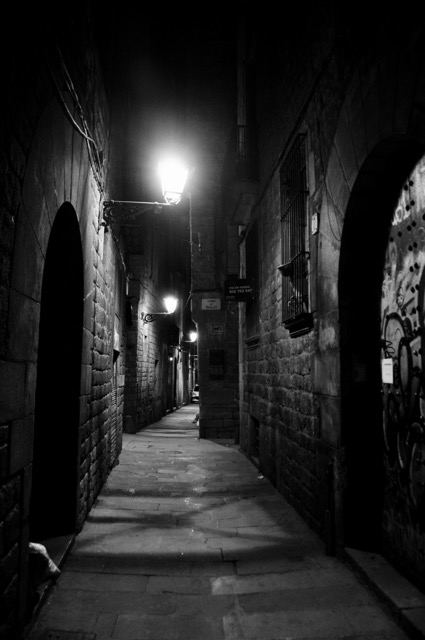
One place I would recommend stopping by is the Picasso Museum in the old town. I really liked the various art pieces on exhibition, the rather cool art shop to pick up some memorabilia and the architecture of the museum itself. It’s also a good way to introduce a slow down into your itinerary if you’ve been busily scurrying around all day. You can read more about the museum here.
Finally, the old town is littered with plenty of pubs, restaurants and little taverns. You could literally eat all day here. On both my trips to Barcelona, I was either brought somewhere to eat or simply stumbled into places with my friends. It always turned out to be a good meal and the owners/operators of the restaurants were remarkably personable and attentive. I could have been lucky or perhaps you could simply do no wrong with Spanish food!
Find the beach or a hotel with a view
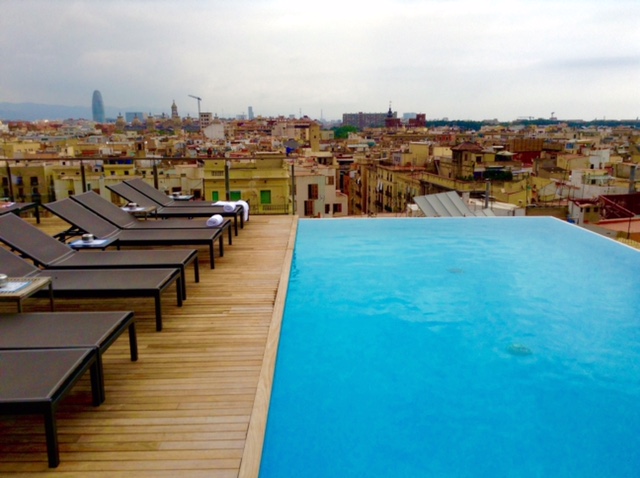
Pictured above is the rooftop infinity pool at Grand Hotel Central. It was absolutely and undoubtedly one of the most memorable Barcelona moments of mine. We had just arrived in the city on a weekday afternoon. The tourists had left for their sightseeing so my travelling company and I pretty much had the whole place to ourselves. Reclined on generously cushioned seats, we ordered ice cold Estrellas and lazed around (see image below). It is the epitome of relaxation and “living the life”. For those who seek out the sun, there’s also the Barceloneta Beach. I never got there during the day (being as sun averse as I am). I did go over at night and it was a soothing, breezy evening – until we landed in one of the many clubs dotting the promenade around the beach and the “doof doof” music took over.
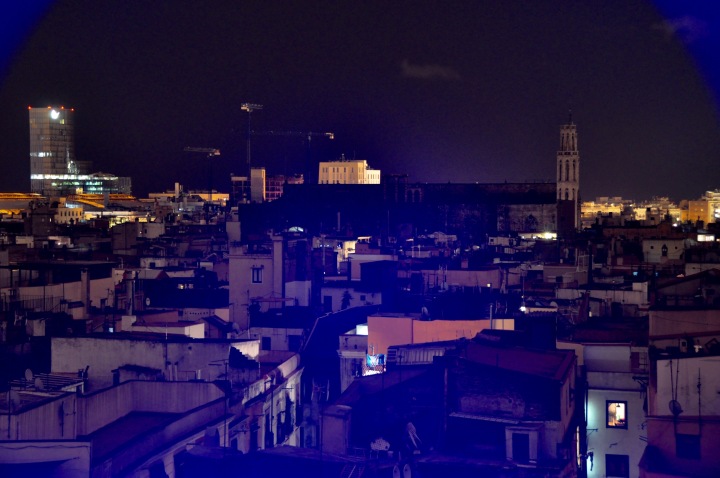
A few closing remarks:
1. If visiting for the first time, with no realistic possibility of doing a repeat visit within a short time frame, plan to spend at least 3 nights here. You don’t want to rush through Barcelona – the pleasure of it all is simply allowing yourself to follow the city’s rhythm.
2. Winter in Barcelona (I was there around late February) felt rather mild to me, which made for a very pleasant stroll around the city (especially the old town). A visit during the peak of summer may disrupt full enjoyment of being outdoors. Park Guell and the beach, for example, felt much more enjoyable without being fully exposed to a scorching sun on a 30 degree day. Having said that, I would point out that unlike Madrid (which is landlocked), Barcelona is a coastal city (facing the Mediterranean Sea) so you won’t really get extreme temperature highs and lows.
3. More music recommendations. Find and follow “Barcelona Sounds” on Spotify and take your pick at some of the coolest playlists to suit the mood. I’ll leave the rest to you.
I’ll finish with one of my favourite photos taken in Barcelona. I dare say it summarises my time here pretty well.





